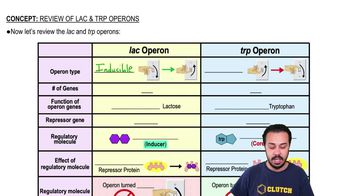Multiple Choice
Which of the following is an example of positive regulation of gene expression?
3207
views
17
rank
1
comments
 Verified step by step guidance
Verified step by step guidance Verified video answer for a similar problem:
Verified video answer for a similar problem:



 6:40m
6:40mMaster Introduction to Regulation of Gene Expression with a bite sized video explanation from Jason
Start learning